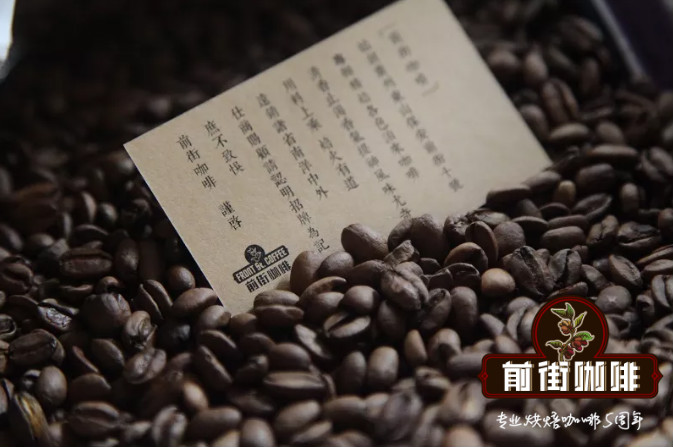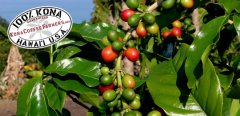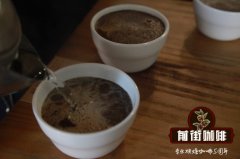Taste and Flavor characteristics and treatment of Indonesian Sumatra Coffee Bean and Mantenin Coffee Bean

Professional coffee knowledge exchange more coffee bean information please follow the coffee workshop (Wechat official account cafe_style)
Indonesia, the largest archipelago country in the world, has more than 400 volcanoes in the country, of which more than 1/3 are active, accounting for about 16% of the world's total. However, the residents of Rakuten do not care about it at all. "symbiosis with volcanoes" has become a unique local culture. Despite the ethnic complexity and religious diversity of Indonesia, the awe and worship of volcanoes is quite consistent. Located in the westernmost part of Indonesia and the sixth largest island in the world, Sumatra is also a famous volcanic island. Lake Lake Toba, the largest volcanic lake in the world, is located on the motor plateau of northern Sumatra. It is rich in natural resources and the special volcanic geological conditions make the nearby soil fertile, which is very suitable for growing coffee, rubber, pepper and other crops. Bring a lot of economic benefits to local residents.
Since the Dutch planted the first coffee tree in Indonesia more than 300 years ago, to this day, Indonesia is the fourth largest coffee producer in the world, while Sumatra, Java and Sulawesi are the three major coffee producing areas in Indonesia. 90% of the varieties are Robusta, while Sumatra coffee is a rare Arabica.
Sumatran coffee, also known as "Mandheling coffee", generally refers to Arabica coffee produced in northern Sumatra. Among them, Aceh and North Sumatra are the main producing areas. Aceh coffee is mainly produced in the Jiayou Mountains (Gayo Mountain) around Lake Lake Tawar, while coffee in Jiangsu Province is mainly produced in Sidikalang on the west side of Lake Toba and Lintong on the south.
In addition to providing mineral-rich volcanic soil, the rainforest climate with large temperature difference and abundant rain water are just enough to meet the environmental conditions for the growth of coffee beans. Mantenin coffee beans have large particles and hard texture, and are prone to defects in the process of planting, so they are usually subject to strict manual selection after harvest.
Manning Coffee is produced in Sumatra, Indonesia, Asia, also known as Sumatran Coffee. The main producing areas are Java, Sulawesi and Sumatra, 90% of which are Robusta species. Among them, the "Manning" produced in Sumatra is the most famous. The best of the exquisite traditional Arabica coffee produced in northern Sumatra of Sumatra is sold as Lindong Lintong and Manning Mandheling. To be exact, Lindong Lintong refers to coffee growing in a small area in the southwest of Lake Toba in Lindong District. The small coffee growing area is scattered on a high and wavy clay plateau full of fern covers. Lintong Lindong Coffee is grown without shade, does not use chemicals, and is almost entirely owned by small private owners. Mandheling Mantning is a broader term that includes Lintong Lindong Manning Coffee and similar conditions in the Diari (capital Sidikalang), the northern growing area of Lake Toba.
Manning Coffee processing
Sellers often mark Lintong Lindong and Mandheling Manning coffee as dry. In fact, the pulp and coffee seeds are often separated by a variety of mixing modes, and the more common is a backyard wet treatment. The smart farmer put the freshly picked coffee cherries into a simple peeling machine made of scrap metal, wood and bicycle parts. Then put the peeled sticky beans in a plastic woven bag to ferment overnight. The next morning the soft pulp and slime that had been fermented were manually washed away. The silver-coated coffee is pre-dried on a sheet in the front yard and sent to the middleman's warehouse to remove the silver skin and further dry. Finally, the coffee was trucked to Port Medan in Medan, the capital of Sumatra, for the third and final drying.
It is also reported that in other Mandheling Mantenin producing areas, after peeling, the sticky material is allowed to dry and attach to the beans, just like the semi-washing treatment in Brazil. Then use a machine to remove the sun-dried sticky and silver skin. Finally, it goes through the same two-stage drying, first in the middleman's warehouse and then in the exporter's warehouse in Medan's port of Medan.
The processing process and Sumatran characteristics. I describe these treatments in such detail because it is not clear how the soil and atmosphere and the unusual treatment techniques and the three-stage drying each affect the formation of the characteristics of Lindong and Manning coffee. Only one thing is certain. These treatments occasionally produce excellent coffee and are extremely unstable. Only through the merciless selection in the Medan port exporter's warehouse can the deep texture and unique and low-key rich taste of Lintong Lindong and Mandheling Mantenin emerge from the interference of other smells.
Important Notice :
前街咖啡 FrontStreet Coffee has moved to new addredd:
FrontStreet Coffee Address: 315,Donghua East Road,GuangZhou
Tel:020 38364473
- Prev

Introduction to coffee bean treatment in Ethiopia _ cultivation of coffee varieties in Ethiopia
Professional coffee knowledge exchange more information about coffee beans please follow the coffee workshop (Wechat official account cafe_style) Ethiopia has always been regarded as the birthplace of coffee. When you understand the local way of handling coffee, you can probably understand that this imperial status is well-deserved. Even under the worst production conditions, coffee trees are blocked by other crops from the sun
- Next

How's the Sumatra mantinin? What are the characteristics of Sumatra mantinin coffee?
Professional coffee knowledge exchange More coffee bean information Please pay attention to coffee workshop (Weixin Official Accounts cafe_style) Gentleman Sumatra Mantenin Mantenin is the high-quality coffee bean grown in the original mountain area at an altitude of 7501500m. Arabica saplings were first introduced to Ceylon (present-day Sri Lanka) and Indonesia by the Dutch in the 17th century. In 1877, a major
Related
- Detailed explanation of Jadeite planting Land in Panamanian Jadeite Manor introduction to the grading system of Jadeite competitive bidding, Red bid, Green bid and Rose Summer
- Story of Coffee planting in Brenka region of Costa Rica Stonehenge Manor anaerobic heavy honey treatment of flavor mouth
- What's on the barrel of Blue Mountain Coffee beans?
- Can American coffee also pull flowers? How to use hot American style to pull out a good-looking pattern?
- Can you make a cold extract with coffee beans? What is the right proportion for cold-extracted coffee formula?
- Indonesian PWN Gold Mandrine Coffee Origin Features Flavor How to Chong? Mandolin coffee is American.
- A brief introduction to the flavor characteristics of Brazilian yellow bourbon coffee beans
- What is the effect of different water quality on the flavor of cold-extracted coffee? What kind of water is best for brewing coffee?
- Why do you think of Rose Summer whenever you mention Panamanian coffee?
- Introduction to the characteristics of authentic blue mountain coffee bean producing areas? What is the CIB Coffee Authority in Jamaica?

